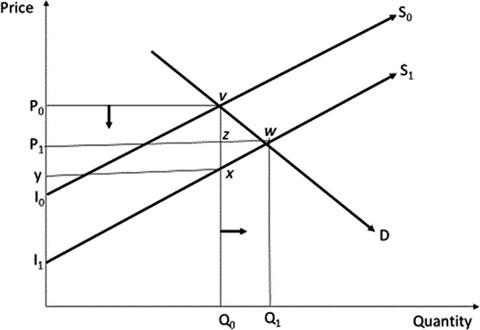当前位置:
X-MOL 学术
›
Food Energy Secur.
›
论文详情
Our official English website, www.x-mol.net, welcomes your feedback! (Note: you will need to create a separate account there.)
Returns to investment in postharvest loss reduction technologies among mango farmers in Embu County, Kenya
Food and Energy Security ( IF 5 ) Pub Date : 2019-12-17 , DOI: 10.1002/fes3.195 Esther Mujuka 1 , John Mburu 1 , Ackello Ogutu 1 , Jane Ambuko 2
Food and Energy Security ( IF 5 ) Pub Date : 2019-12-17 , DOI: 10.1002/fes3.195 Esther Mujuka 1 , John Mburu 1 , Ackello Ogutu 1 , Jane Ambuko 2
Affiliation

|
Horticultural production is a source of livelihood for many smallholder farmers in Kenya. However, the potential is hampered by high postharvest losses estimated at 40%–50% in fruit and vegetables. The losses are attributed to various factors including postharvest handling, lack of storage technologies, lack of processing facilities, and poor market access. Consequently, some farmer groups have resorted to aggregation of their mangoes and engagement in small scale processing of mangoes into shelf stable products that cannot be marketed widely. In order to bridge the lack of capacity of smallholder farmers, the University of Nairobi's postharvest project with support from the Rockefeller Foundation's YieldWise Initiative seeks to upgrade two fruit aggregation centers by creating awareness and providing existing, applicable, and proven postharvest loss reduction technologies such as tunnel solar driers, brick coolers, charcoal, and CoolbotTM cold storage technologies. However, the potential economic impact of the proposed investment is not known. Hence, this study aimed at assessing the potential economic returns to investment in postharvest loss reduction technologies among smallholder mango farmers in Embu County of Kenya. A critical overview on methods employed in analyzing returns to investment in agricultural technologies has been provided. The economic surplus model was used to estimate the potential benefits of the investment. Using the cost–benefit analysis (CBA) approach, a maximum adoption rate of 10% over 10 years, and a 10% discount rate, it was found that the investment was worthwhile. The NPV was US $ 1.3 billion. The IRR and BCR were 28% and 4.29, respectively. Sensitivity analyses showed that the investment is viable at higher adoption and lower discount rates indicating the need to promote the technologies even under more difficult macroeconomic conditions.
中文翻译:

肯尼亚恩布县芒果种植者减少收获后损失技术的投资回报
园艺生产是肯尼亚许多小农户的生计来源。但是,水果和蔬菜的估计高40%–50%的收获后损失阻碍了这种潜力。损失归因于各种因素,包括收获后处理,缺乏存储技术,缺乏加工设施以及市场准入不佳。因此,一些农民团体诉诸于将其芒果聚集在一起,并参与将芒果进行小规模加工,制成无法广泛销售的货架稳定产品。为了弥补小农的能力不足,内罗毕大学的收获后项目在洛克菲勒基金会的YieldWise Initiative的支持下,试图通过提高认识和提供现有的,适用的,以及成熟的减少收获后损失的技术,例如隧道式太阳能干燥器,砖式冷却器,木炭和CoolbotTM冷库技术。但是,拟议投资的潜在经济影响尚不清楚。因此,本研究旨在评估肯尼亚恩布县小农芒果种植者在减少收获后损失技术上投资的潜在经济回报。提供了对用于分析农业技术投资回报的方法的重要概述。经济盈余模型用于估算投资的潜在收益。使用成本效益分析(CBA)方法,在10年内最高采用率为10%,折现率为10%,发现这笔投资是值得的。净现值为13亿美元。IRR和BCR分别为28%和4.29,分别。敏感性分析表明,该投资在较高采用率和较低折现率的情况下是可行的,这表明即使在更困难的宏观经济条件下也需要推广该技术。
更新日期:2019-12-17
中文翻译:

肯尼亚恩布县芒果种植者减少收获后损失技术的投资回报
园艺生产是肯尼亚许多小农户的生计来源。但是,水果和蔬菜的估计高40%–50%的收获后损失阻碍了这种潜力。损失归因于各种因素,包括收获后处理,缺乏存储技术,缺乏加工设施以及市场准入不佳。因此,一些农民团体诉诸于将其芒果聚集在一起,并参与将芒果进行小规模加工,制成无法广泛销售的货架稳定产品。为了弥补小农的能力不足,内罗毕大学的收获后项目在洛克菲勒基金会的YieldWise Initiative的支持下,试图通过提高认识和提供现有的,适用的,以及成熟的减少收获后损失的技术,例如隧道式太阳能干燥器,砖式冷却器,木炭和CoolbotTM冷库技术。但是,拟议投资的潜在经济影响尚不清楚。因此,本研究旨在评估肯尼亚恩布县小农芒果种植者在减少收获后损失技术上投资的潜在经济回报。提供了对用于分析农业技术投资回报的方法的重要概述。经济盈余模型用于估算投资的潜在收益。使用成本效益分析(CBA)方法,在10年内最高采用率为10%,折现率为10%,发现这笔投资是值得的。净现值为13亿美元。IRR和BCR分别为28%和4.29,分别。敏感性分析表明,该投资在较高采用率和较低折现率的情况下是可行的,这表明即使在更困难的宏观经济条件下也需要推广该技术。



























 京公网安备 11010802027423号
京公网安备 11010802027423号